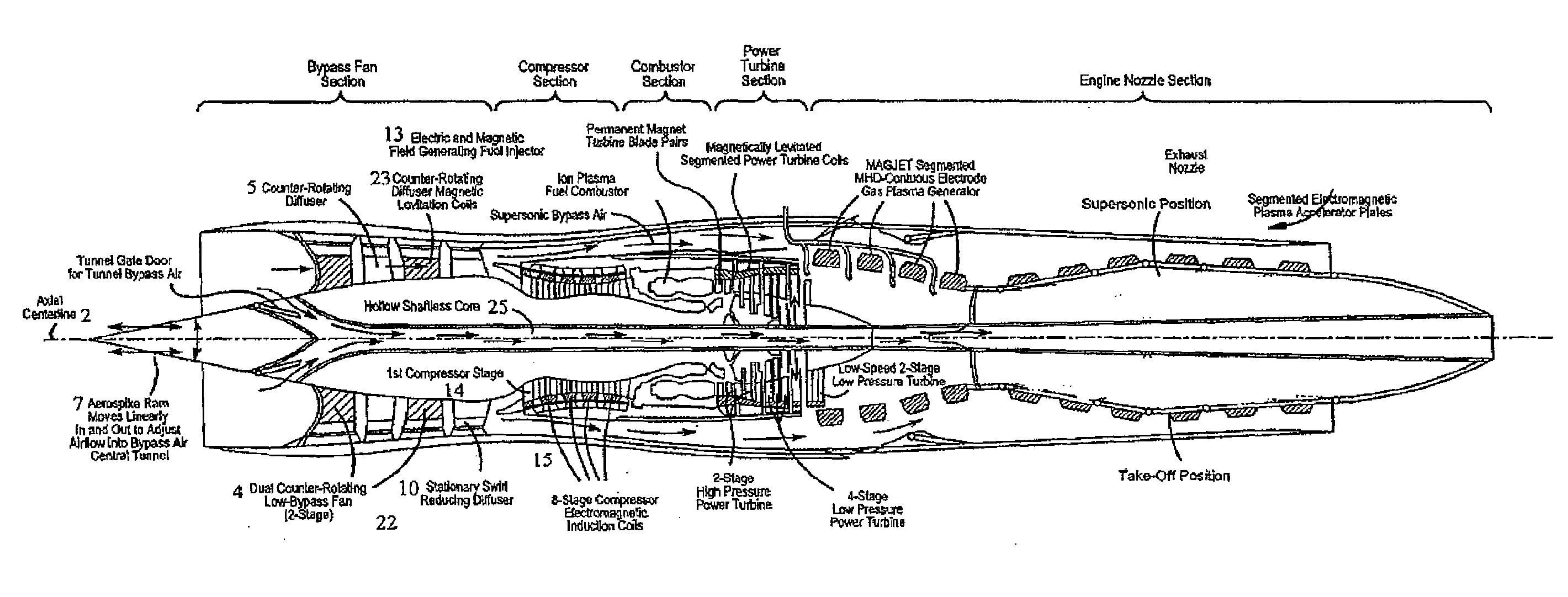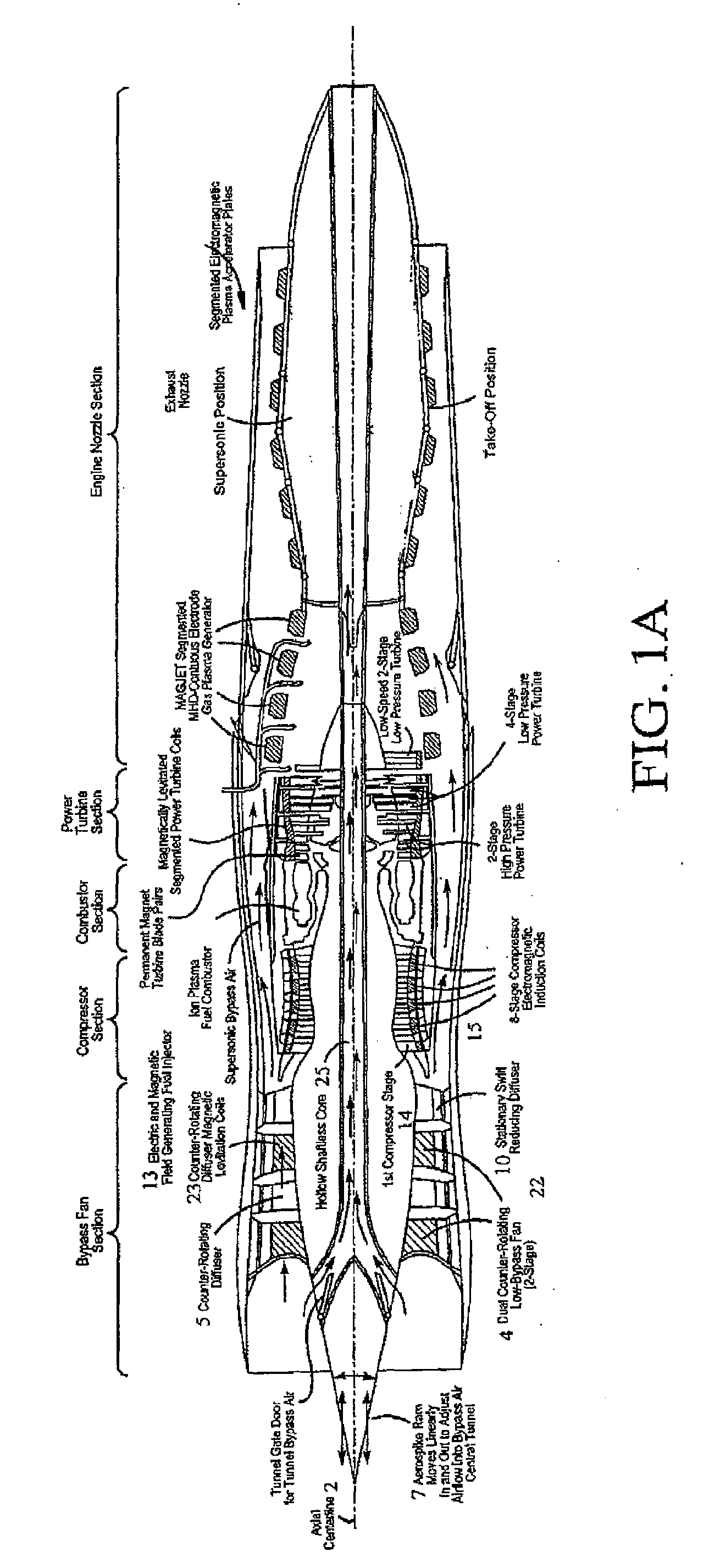Magnetic advanced generation jet electric turbine
a jet engine and advanced technology, applied in the field of hybrid engines, can solve the problems of reducing performance, reducing horsepower, and reducing thrust to weight ratio, so as to increase horsepower, reduce weight, and reduce weight
- Summary
- Abstract
- Description
- Claims
- Application Information
AI Technical Summary
Benefits of technology
Problems solved by technology
Method used
Image
Examples
Embodiment Construction
[0047]FIG. 1A-C R. schematic representations of an aerospace supersonic aerospace gas turbine engine (1) in accordance with an exemplary embodiment comprises an outer casing or exoskeleton (15) extending the along an axial centerline axis (2). Exoskeleton (199) has a generally a hollow cylindrical shape the specific dimension of which may be selected by the designer for specific parameters of high-speed flight. Exoskeleton (15) may comprise, in one embodiment in the outer casing and the inner casing having a space there between. Turbine engine (1) further comprises an inlet section (3) into which air enters and is propelled in a bypass fan section (4) by the first of two counter-rotating bypass fans, after which the air is diffused and straightened through a counter-rotating diffuser (5) and further propelled by any second bypass fan (5). An aerospace ram (7) which moves in and out linearly along the axial centerline 2 and is attached to a slotted section of the bypass tunnel (6) to...
PUM
 Login to View More
Login to View More Abstract
Description
Claims
Application Information
 Login to View More
Login to View More - R&D
- Intellectual Property
- Life Sciences
- Materials
- Tech Scout
- Unparalleled Data Quality
- Higher Quality Content
- 60% Fewer Hallucinations
Browse by: Latest US Patents, China's latest patents, Technical Efficacy Thesaurus, Application Domain, Technology Topic, Popular Technical Reports.
© 2025 PatSnap. All rights reserved.Legal|Privacy policy|Modern Slavery Act Transparency Statement|Sitemap|About US| Contact US: help@patsnap.com



